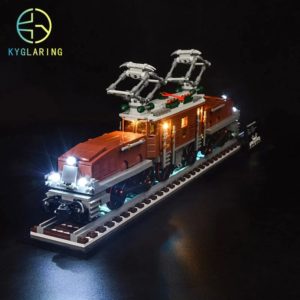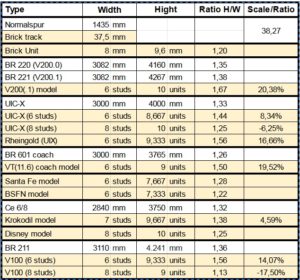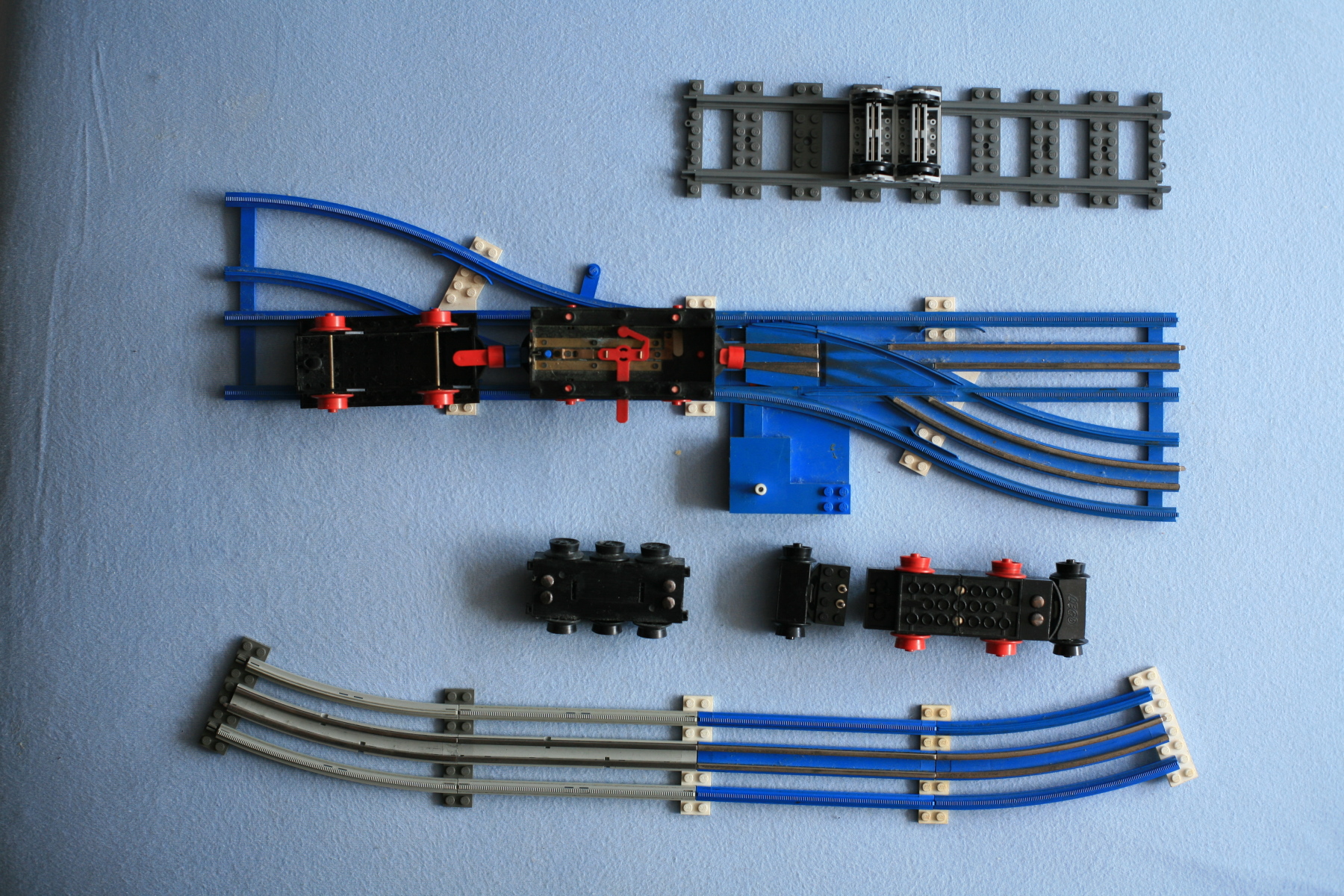After starting an introduction of building blocks, here are some deeper views into a subcategory, the trains. By the way, there is a post about a train model, the BR 650 diesel powered railcar, too. But let's begin with some facts. A manufacturer of building blocks dominating the market for a long time introduced a railroad system in 1966, unfortunately a stepmotherly segment. Since ever, the system consisted of a single circle radius, straight rail pieces and a switch, fortunately matching the existing track curve with its counter switch, thus the mirrored switch. It is then also called a left or right switch. That’s it in terms of tracks.
Throughout history, there have been various electrical systems. Starting with 12V technology and rails with two center conductors between the rails, that was the beginning. It had advantages and disadvantages.
The system was followed by current-carrying rails, i.e. one connected to the positive pole, one to the negative pole. The voltage was then simply tapped there. Nice, because it was closer to the original than the additional inner conductor rails. Negative, this applies to both track systems, because when you build a terminal loop (i.e. a circle that leads into one entrance and exit), you cause a short circuit in the tracks if you don't insulate them. Even if they are only insulated, the vehicle would stop there because the voltage has reversed polarity to the direction of motion, so the motor then backs up or simply then stops on the insulation. This can be solved by track areas, which are then reversed in polarity accordingly, or one builds no terminal loops, as it was normal in former times at the end of a streetcar line, because one simply had not built two driver's cabs into the streetcar. Simple way out: stub track with buffer stop and a track change for the opposite direction.
Continuing with the building block tracks, then they went from 12V to 9V, which made it possible to use battery technology. This also eliminated all current-carrying rails, the entire track could be made of inexpensive plastic. The control then took place with an infrared interface, which works quite well in the apartment and outside the tunnels. Tunnels are bad anyway, then the train is no longer in the field of vision... Currently, the train is operated with Bluetooth, i.e. from a cell phone app, so the kids have enough arguments to occupy themselves more with the cell phone. Some manufacturer offer remote controls. But also this has advantages, that more than one person can play on a course at the same time and interactively. A place for the battery must then also be found, so is the control module and since the passenger trains are also equipped with interiors, the block is occasionally disturbing.

Illuminated LEGO Creator 10277 Swiss Crocodile
One existing constant is the track gauge. With five studs spacing these tracks are constructed, so a 40 mm rail to rail pitch. This results in a track gauge of 37.5 mm. The real of the major railroads, USA and Europe occupy about 40% of the world's rail network, use the "standard gauge" 1435 mm. As interesting for models are then still the countries of the former Soviet states to mention, which use a wider track, but also "only" around 85 mm, which is in the context of this topic rather minor. Some of you will now say, but I was driving on the famous this-and-that line after all. It must be admitted that smaller countries very often import train material, so the "upper part" is identical to others. The narrow gauge is to be omitted from this post once completely. This then results in a fixed scale of 1:38.267. If we take another look at the original, we can roughly say that a standardized passenger car in Europe is about 3 m wide and 4 m high, these are the UIC-X. Twin-deck cars, modern cargo cars, still take a special position in the dimensions. This would result in a stud width of 10 studs. An express train car would have a height of 10.8 unit bricks. It is to be anticipated, nobody produces this so far, but it is the model fidelity of the front view. As frequently implemented in modeling, especially the long wagons are shortened. Who has at home also the possibility to reproduce a 200 m radius to scale. Märklin got away with shortening the cars by 20 % for a long time, which is a sensible compromise on compact and narrow layouts. So it is then also with the rolling stock of the building blocks, length reductions, so that the optics is not completely lost.
What is available on the market... The visually valuable models of the Lego company, whose target group is the older ones, use a stud width of seven for the detailed Swiss crocodile, 6 for the rather boxy Santa Fe diesel locomotive and 8 for the Disney train. So it's all there, but you still want it to fit on the table, the length of the Santa Fe is about impressive 45 m.
Here is a table of the building blocks available on the market, intentionally no manufacturers are named.

To be seen in the first lines of the table, the already known and mentioned sizes and relations. The originals are listed except colored background in the rows then still in the dimensions of millimeters, with the models the resolution in unit stones (stud and unit, thus 8 mm and 9.6 mm).
The Ratio(H/W) column deals with the ratio of width to height. The average value is about 1:1.34 for the originals, the values of the different vehicles are close to each other. There is one manufacturer, admittedly, currently only one comparable European model is available, here the model deviates only 4.6 %. From my own observation, I can state that the model reproduces the original very well. In a YouTube video, I recognized the V200.1, which corresponds to the BR221 at the DB. The video clearly shows that the model is much too high, the table confirms, over 20 % too high, the same applies to the VT11.6 (BR601/BR602). The “Rheingold” coach is also too high with 17 %. The V100 is available in two different widths, 6 studs and 8 studs, you can see that here the 7 studs would have been the right choice, with the same model height.
This explains then the case why some builders adjust the models in the width laboriously. Laboriously, because some base plates are produced especially for the product in the offered width. So also trains with different widths are badly combinable, because the view suffers nevertheless. Harmonization would be an advantage here, the fiercely competitive suppliers of model trains have already achieved this very early.

